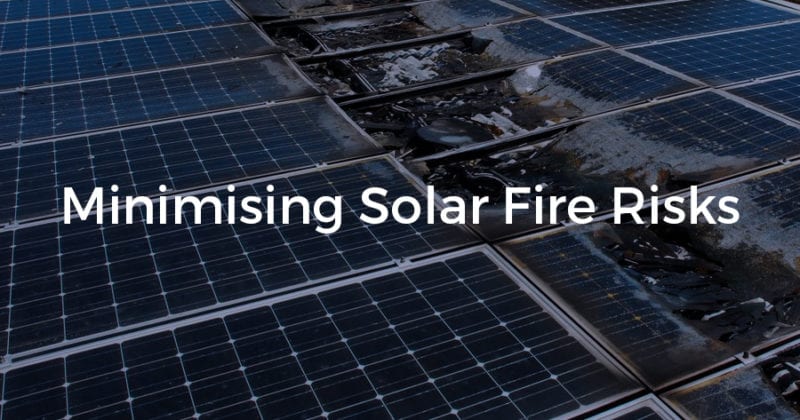SolarEdge SafeDC™ Technology: Minimising Solar Fire Risks

Solar PV systems are considered very safe and generally pose no danger to people or property. However, just like any electrical installation, if not completed correctly or poor-quality products are used, solar PV systems can be susceptible to electrical fires. This may be caused by faults, short circuits, ground faults and reverse currents.
Standard residential PV systems have a constant supply of high DC voltage running through them when being energized by the sun. Australian standards require solar PV systems to have rooftop DC isolators to turn off this high DC voltage when needed. However, even when turned off, they still have up to 600V DC between the solar panels and inverter. This high voltage is potentially dangerous for firefighters, installers, maintenance personnel, and anybody performing work on the roof. In some cases, a poor-quality DC isolator may be the cause of the fire, so it’s important to know you’re purchasing a reliable and high-quality product. You can see a list of DC isolator recalls here.
Electric Arcs
When cables or connectors in a PV system are improperly connected or damaged, the electric current may pass through the air, causing an electric arc. An electric arc is a continuous, high-energy current through a non-conductive medium, such as air, that flows from one conductor to another. This arcing can cause the mounting system component to become electrified, potentially shocking anyone touching the unit, or risk of a fire being started.
DC arc faults can occur anywhere from the solar PV modules, DC isolation equipment or solar inverter connected to the switchboard. Solar PV systems are particularly sensitive to electric arcs because of the high DC currents and voltages involved.
The temperature of an electrical arc is also a significant factor, as it can easily get to temperatures hot enough to melt glass, copper and aluminium, as well as igniting any surrounding materials.
What can trigger a DC arc fault?
- Breakdown of conductor continuity from loose joints due poor-quality connections and installation methods.
- Corrosion of joints overtime
- Water ingress into cheap rooftop DC isolators
- Poor-quality solar panel junction
- Damage or degradation of cable insulation
The SolarEdge Solution
A SolarEdge system consists of a PV inverter, power optimisers connected to each module and module level-monitoring. The systems are also designed with SolarEdge SafeDC™ technology; an in-built safety feature which eliminates safety risk during installation, maintenance and in the case of an emergency if there’s a fire.
SolarEdge SafeDC™ technology is designed to deenergise power optimisers and drop the DC voltage output to 1 volt per optimiser when the AC power is shut off, eliminating any risk associated with high DC voltage. The function can be triggered when the inverter has been switched off, when a building is disconnected from the grid, and when there are cabling or insulation resistance faults detected. Unlike some other systems which just have a DC isolator switch, SolarEdge systems significantly reduce the voltage to a level where it is safe to work with.
SolarEdge SafeDC™ technology is integrated into all SolarEdge inverters and can be added at any stage to an existing installation that has SolarEdge power optimisers. The technology is also compatible with non-SolarEdge inverters.
Without installing SolarEdge SafeDC™ technology, you may end up paying more and delaying the time it takes to complete your installation. By opting for an external disconnection device to shut off DC voltage, you increase the cost of the system as the additional device and wiring associated with it will become an added cost. Installation time is lengthened due to the necessity of installing a separate device and system losses are greater, therefore reducing efficiency.
The SolarEdge SafeDC™ safety feature is certified to meet advanced European and US safety standards:
- IEC 60947 as a disconnection means between a PV inverter and a PV generator
- VDE 2100 for safety in cases of firefighting or maintenance (EU)
- Rapid Shutdown functionality available for NEC 2014/2017 690.12 (US)
- Integrated Arc Fault Protection (Type 1) for NEC 2011 690.11 (US)
- UL1699B arc detection requirements (US). Found in SolarEdge inverters with CPU version 3.19xx and higher.
Installing a SolarEdge system is your best solution for minimising fire risks caused by high DC voltage in PV systems, and ensuring the safety of installers, firefighters and maintenance personal. If you’d like more information on SolarEdge systems and how to ensure your PV system is safe, please contact us today.


